We are glad to let you know that Consteel 14 is out! We have expanded the boundaries of the latest version of Consteel and not just developed new features for Consteel, but created a plugin for Rhino-Grasshopper, and redesigned our website to serve better for our users’ needs.
What’s new in Consteel 14?
Overall Imperfection Method
Stability design based on imperfections is becoming more prevalent as modern architecture poses an increasing challenge to structural designers with its unusual, innovative, and non-conventional solutions. Global buckling shapes of the structure can be used as starting data to geometric imperfections. However, in addition to imperfection shapes, it is also necessary to determine their amplitudes, but the design standards do not provide much help for this, as it yields a solution for only simple column buckling problems. In the case of real, complex structures, the value of the imperfection amplitude cannot be calculated in this way. The new method we have developed, the Overall Imperfection Method, provides a solution to this.
We introduced a new sensitivity test called the Imperfection Sensitivity test. Using the results from this new test, we also automatically obtain the value of the required amplitude multiplier for the application of the buckling shapes as imperfection. Thus, the imperfection based stability design can already be performed automatically and quickly in Consteel as the design based on strength reduction factors in the general method.
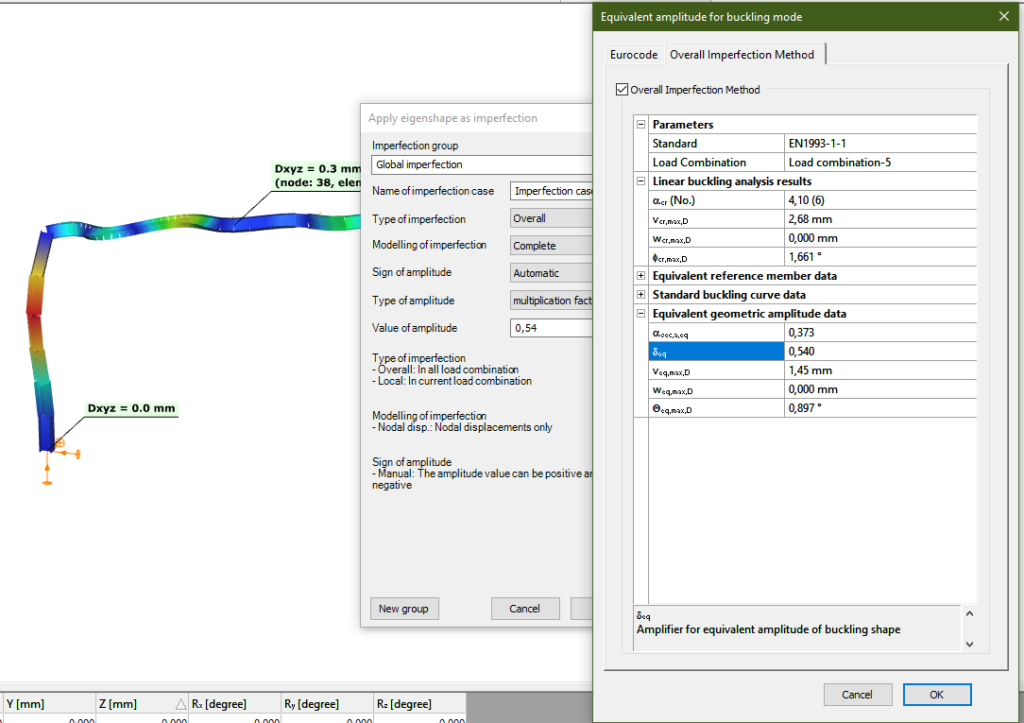
Smart Link
A new type of link element has been implemented into Consteel, the smart beam-beam link element, which greatly simplifies the modeling of the eccentric connection of two bypassing members. Typically, this is the case with the connection between the main beam and purlins. With this new object, we can place link elements at specific points in the main beam, and we can easily connect other beams to their other end point, based on the predefined parameters of the eccentricity. In the case of any change in geometry or profile, the link element follows the modification of the main beam, together with the purlin attached to it. The link elements can be placed individually or in groups with a predetermined arrangement along the main beam.
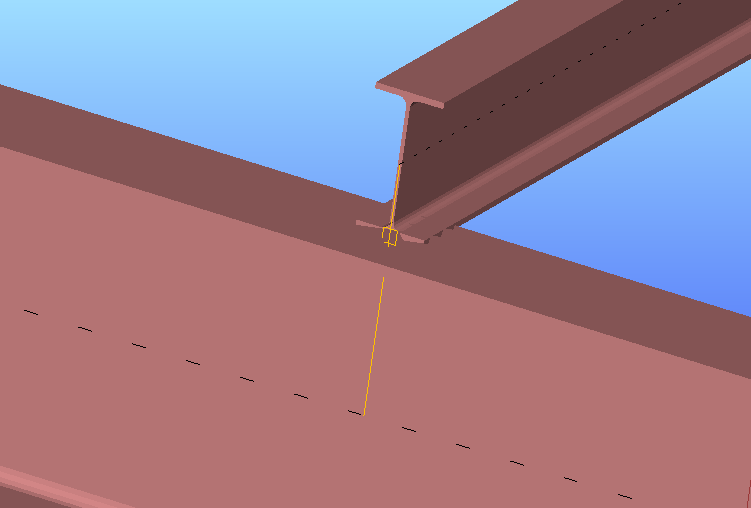
Linearly variable distributed surface load
The available types of surface loads have been expanded with a linearly variable type of distributed load. From now on, the definition of snow accumulation loads will be much easier than before. In this case also, the load can be applied over the entire surface or only on a delimited part of it. The desired load pattern of a roof can be assembled with several surface loads of different intensities linked to a single load-transfer surface spanning over the entire roof.
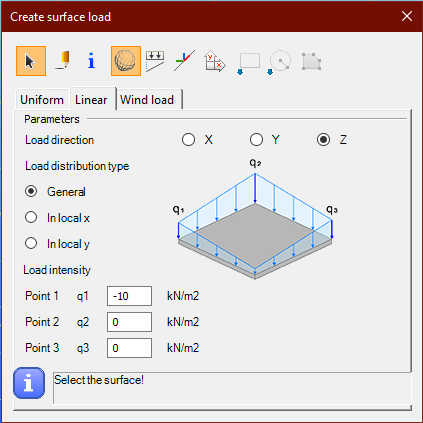
Critical temperature
We have also implemented the calculation of the critical temperature, which is an important parameter of the design in fire situation. The critical temperature is the temperature at which, due to that heating, the material properties are reduced to such an extent that the load-bearing capacity of the element is exhausted at a given load. It means that the value of utilization is just 100%. If fire protection is to be achieved with fire-protection intumescent painting, this value is the basis for specifying the appropriate material and layer thickness.
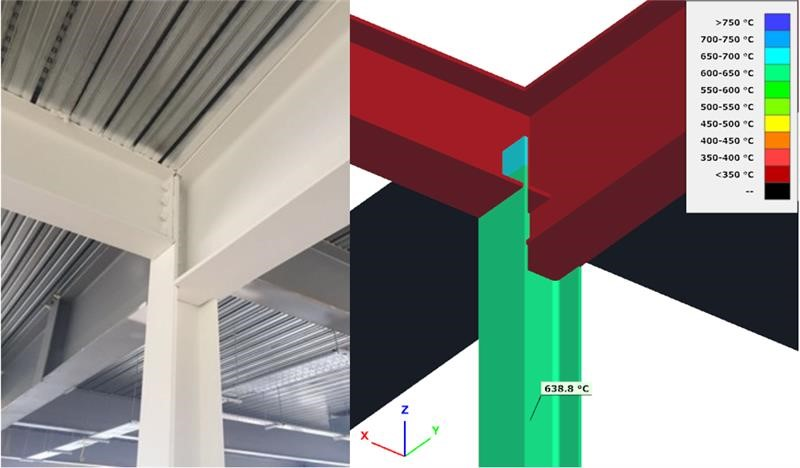
The critical temperature must be calculated differently for the strength and stability analysis. Consteel can perform both calculations and the result will be the lower of the two calculations, i.e. the design value.
Pangolin plugin for Grasshopper
In the intuitive and revolutionary parametric geometric modeling environment of Grasshopper, it has already been possible to create any spatial model that can be described by mathematical functions. The new plugin we have developed for this environment allows us to develop the geometric model directly into the Consteel model right in the Grasshopper, endowing it with gauges, supports, loads, and all the elements and features available in the Consteel. This model can then be uploaded directly to Consteel. The model thus adopted only needs to be run in Consteel, because the modeling can be carried out in a parametric way in Grasshopper. If you need to change somewhere in the geometry or loads, you can do so by changing a few parameters, and then passing the model that has changed in this way to Consteel, you can run the analysis again immediately. The live connection between Grasshopper and Consteel also makes it possible to supplement the model built in Consteel with additional elements and loads in Grasshopper, of course also in a parametric way.
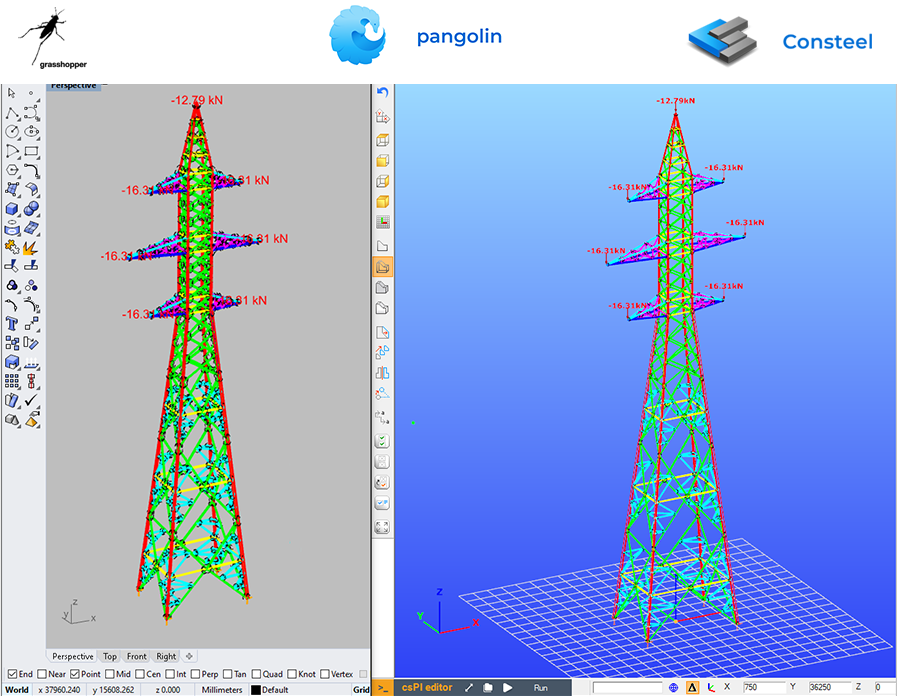
Online user account and licence system
Along with the release of Consteel 14, we are also launching our new website which will offer a continuously growing personal space for registered users so there will be an opportunity to track your licenses, to send error messages to our support team and even upload your own csPI codes. We provide a continuously expanding set of materials, including different tutorials and learning materials, some of which will be available for registered users exclusively. Our aim is to create a centralized user experience. It is important to note that uploading csPI codes will only be available later in time.
Regarding our self-developed online license management system, the main advantage in this development is that from now on there is no need to differentiate between a local and a network license, as the user can use the purchased license on any computer where an internet connection is available. For larger companies where multiple licenses are used, a user with administrative rights can control the allocation of licenses to each engineer. This will make the use of licenses much more flexible within the company.
It is important to note that this option will only be available to students and trial users for the time being. However, in addition to continuous improvement, we will gradually make it available to other users in the future. The hardware keys used so far remain usable. It is up to the user to decide whether they want to switch to the new licensing mode and return their dongle or stay with the previous protection system.
We hope you like our new developments and features!
Is Consteel new to you? ![]() Get started with one of our easy and quick tutorials on our YouTube channel!
Get started with one of our easy and quick tutorials on our YouTube channel!




